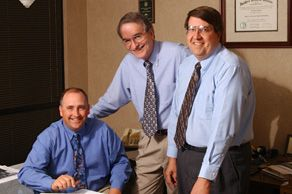Many architecture firms struggled after the economic downturn hit the design and construction industry hard in 2008. However, Foreman Seeley Fountain Architecture, a small Atlanta firm with 14 employees, managed to survive the Great Recession and is now positioning itself to thrive in the economy’s recovery.
What helped FSF become resilient and get through these tough times was a solution that helped them plug some leaks in their cash flow. By minimizing these leaks, they were able to increase revenue very quickly.
Hemorrhaging Money
FSF’s Vice President Jeff Seeley describes his firm as being pretty typical. “We were just like a lot of firms—just spreadsheeting it. We’d file an expense report, then months later, realize we’d forgotten to bill the client for our mileage. It was too late and too embarrassing to go back and ask for it later.” Multiply this by several similar instances and it’s easy to see how FSF’s existing billing system was costing them money.
Looking back, Seeley realizes there were all kinds of miscellaneous hours for which FSF wasn’t billing, such as additional services, mileage to job sites, and blueprinting. All this billable time was adding up, just not in their bank account.
Plugging the Leaks
According to Seeley, “All those little things we weren’t billing for? Those added up to thousands of dollars a month. That’s what we started saving when we started using ArchiOffice.” FSF started using ArchiOffice in 2007.
That made all the difference in helping them keep their doors open during hard times. “We have watched other architectural firms require severe staff reductions to survive. We’re still afloat, and I truly believe that’s because we did a better job of identifying those lost reimbursables and learning to time manage our projects better.”
Improving Project Management
Because Seeley and his coworkers could see the percentage complete of various project stages with ArchiOffice, they realized how many hours were being spent on certain project phases and started to budget their time better.
“Here’s an example: we were doing a school renovation. We had six weeks. The way we used to do it, I’d just look at it as ‘I’ve got six weeks to do it’ and suddenly, half my fees were eaten up by schematic design,” Seeley laughs. “Now, I pay attention to how many hours have been allotted to complete a task, not what day it is due. Once those hours are up, I start asking where the drawings are, and people don’t spend all their time on one phase.”
FSF’s staff also started doing a better job paying consultants now that ArchiOffice was helping them to plan before the job began, making financial planning clear and easy. They knew where they stood with the budget. “We have a clearer vision of where we’re going to be financially two or three months out, so we do a much better job of allocating our resources. If we know there’s going to be a rise or dip, we can plan accordingly, based on how much work we have ahead of us,” says Seeley.
Adapting for the Future
Recently, the firm implemented ArchiOffice’s document management and remote access capabilities. So now, their staff can access project data and documents from anywhere they have internet access–virtually expanding their office’s reach. “We were on a job site recently and someone asked for the specs. No one knew where they were. The contractor didn’t have them—they were probably stuck holding a door open somewhere. So someone pulled out a laptop, accessed ArchiOffice remotely and opened up the specs document for us right away. The amount of time ArchiOffice saves us is invaluable.”
Related Stories
| May 24, 2012
2012 Reconstruction Awards Entry Form
Download a PDF of the Entry Form at the bottom of this page.
| May 23, 2012
New hospitals invest in data centers to manage growth in patient info
Silver Cross became one of the first hospitals to install patient tracking software so families know where a patient is at all times. New communication equipment supports wireless voice and data networks throughout the hospital, providing access to patients and their families while freeing clinicians to use phones and computers where needed instead of based on location.
| May 21, 2012
$61,000 awarded to students in Cleveland’s ACE Mentor Program
Mayor Frank G. Jackson gives keynote address at scholarship event for 80 Cleveland Metropolitan School District students involved in the ACE Mentor Program, which provides guidance and assistance for students interested in careers in the integrated construction industry.
| May 14, 2012
SMPS and Deltek announce alliance
A/E/C industry leaders partner to advance technology’s role in design firm marketing and business development.
| May 14, 2012
ArchiCAD e-Specs integration unveiled
Architects, engineers and construction professionals use InterSpec’s e-SPECS products on thousands of projects annually to maintain synchronization between construction models, drawings, and project specifications.
| May 9, 2012
International green building speaker to keynote Australia’s largest building systems trade show
Green building, sustainability consultant, green building book author Jerry Yudelson will be the keynote speaker at the Air-Conditioning, Refrigeration and Building Systems (ARBS) conference in Melbourne, Australia.
| May 7, 2012
2012 BUILDING TEAM AWARDS: TD Ameritrade Park
The new stadium for the College World Series in Omaha combines big-league amenities within a traditional minor league atmosphere.
| May 2, 2012
Trimble acquires SketchUp 3D modeling platform
The transaction is expected to close in the second quarter of 2012.

















